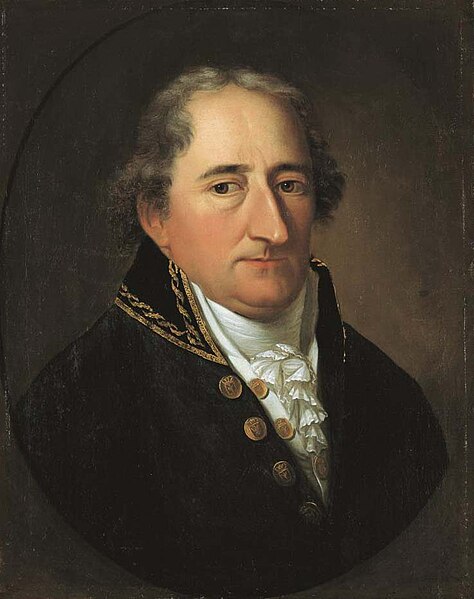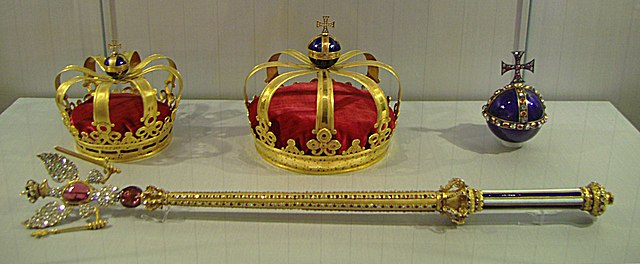The Prussian Reform Movement was a series of constitutional, administrative, social, and economic reforms early in 19th-century Prussia. They are sometimes known as the Stein–Hardenberg Reforms, for Karl Freiherr vom Stein and Karl August von Hardenberg, their main initiators. German historians, such as Heinrich von Treitschke, saw the reforms as the first steps towards the unification of Germany and the foundation of the German Empire before the First World War.
Karl Freiherr vom und zum Stein
Karl August von Hardenberg
Frederick II inspecting his lands and talking to potato growers.
Queen Louise of Prussia
The Kingdom of Prussia constituted the German state of Prussia between 1701 and 1918. It was the driving force behind the unification of Germany in 1866 and was the leading state of the German Empire until its dissolution in 1918. Although it took its name from the region called Prussia, it was based in the Margraviate of Brandenburg. Its capital was Berlin.
The Prussian Crown Jewels, Charlottenburg Palace, Berlin
Prussian territorial acquisitions in the 18th century
Attack of the Prussian infantry at the Battle of Hohenfriedberg in 1745
Prussia (orange) and its territories lost after the War of the Fourth Coalition (other colours)








